How to decorate a north-facing room – 10 ways to transform a tricky space into a bright and warm room
All the design tricks you need to make a north-facing room feel bright and warm


- 1. Choosing the right colours
- 2. Dark shades are an option
- 3. Add warmth with flooring
- 4. Opt for paler furniture
- 5. Match furniture to walls
- 6. Consider colour drenching
- 7. Choose your lighting carefully
- 8. Allow light to flow with voile curtains
- 9. Lighten up with bedding
- 10. Work magic with mirrors
- FAQs
North-facing rooms get a bad press – these spaces do lack natural light as they miss out on direct sunlight. This means they can be cold visually and in terms of temperature as they don't warm up naturally from the sun. The key is to learn how to decorate a north-facing room so you can enhance what you have.
These rooms tend to make great snugs, libraries and gaming rooms – or a cosy living room idea. It is possible to create a lovely space if you follow some key interior design advice, and start by thinking about your room's colour scheme and paint ideas.
'Opt for warm neutrals like beige, ivory, or light tan. Warm shades of peach, coral, or light terracotta, also soft blue/greens, particularly those with warm undertones, work well in north-facing rooms,' advises Francesca Wezel, founder, Francesca's Paints.
How to decorate a north-facing room
The first step on the journey to learning how to decorate your north-facing room is to understand how colours work in this kind of space, then you can think about all the other elements and how to pull the room together. Our experts offer their top tips below on how to turn your cold north-facing room into one you want to spend time in.
1. Choosing the right colours
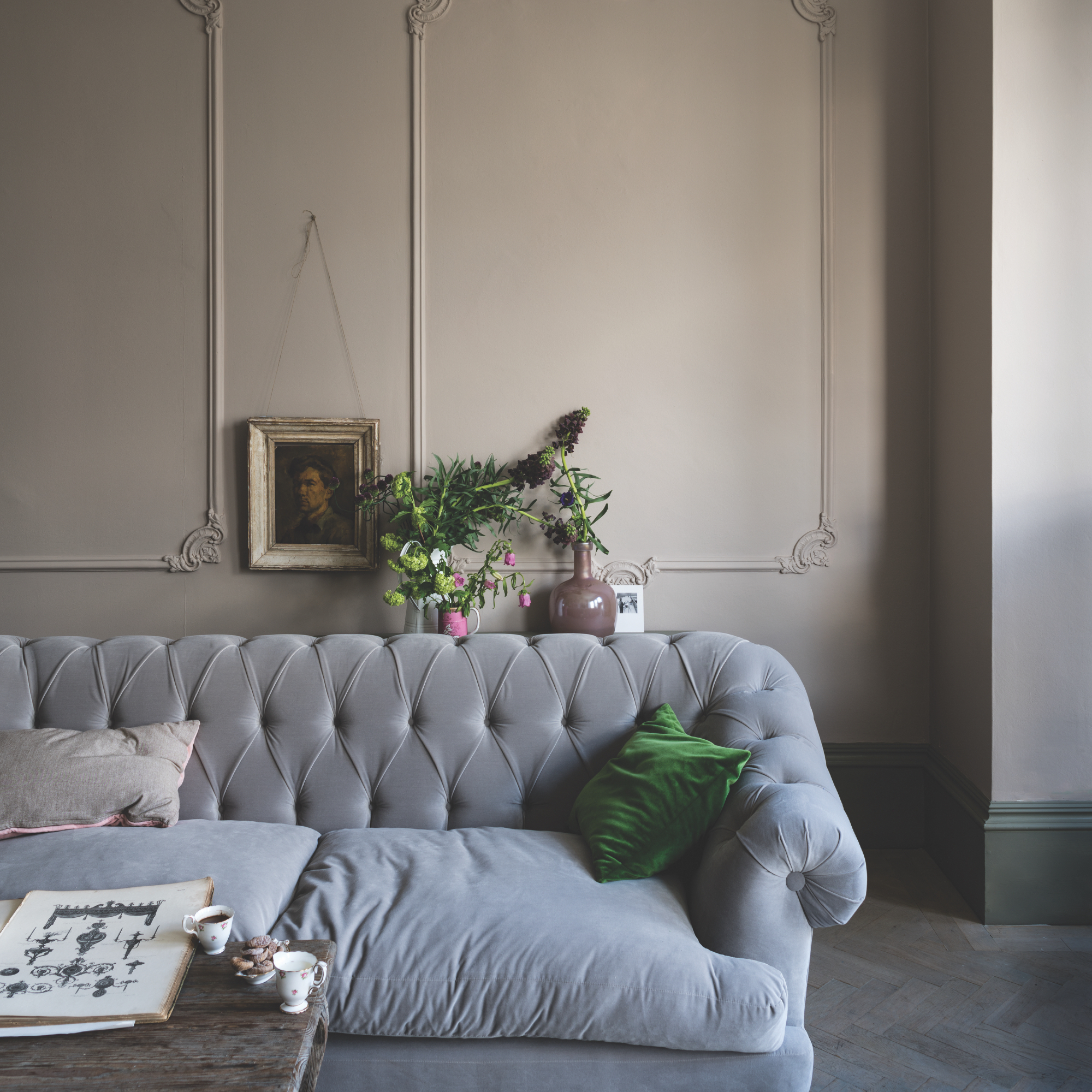
The light that does come into a north-facing room tends to have a blue tint due to it not being direct, that is what gives it a cool feel. Choosing the perfect paint colour is essential to creating a space that feels welcoming.
'For north-facing rooms – the one people worry about most – you have 2 options,' says Patrick O'Donnell, brand ambassador, Farrow & Ball.
'Firstly, you can use warm-based colours with elements of red or yellow, such as Joa’s White or Jitney. Alternatively, you can endeavour with the limitations and embrace the dark by using moody, inky tones such as Hague Blue or Railings!'
Sign up to our newsletter for style inspiration, real homes, project and garden advice and shopping know-how
A warm neutral will give the space a warming feel, and create a blank canvas for you to then add in splashes of colour to pep it up.

Patrick O’Donnell has been bringing his impeccable eye for colour to Farrow & Ball since 2012. Over that time, he has been a Showroom Manager, Global Colour Consultancy Manager and now Brand Ambassador. However, he is best known as the much-loved face of Farrow & Ball on social media
2. Dark shades are an option
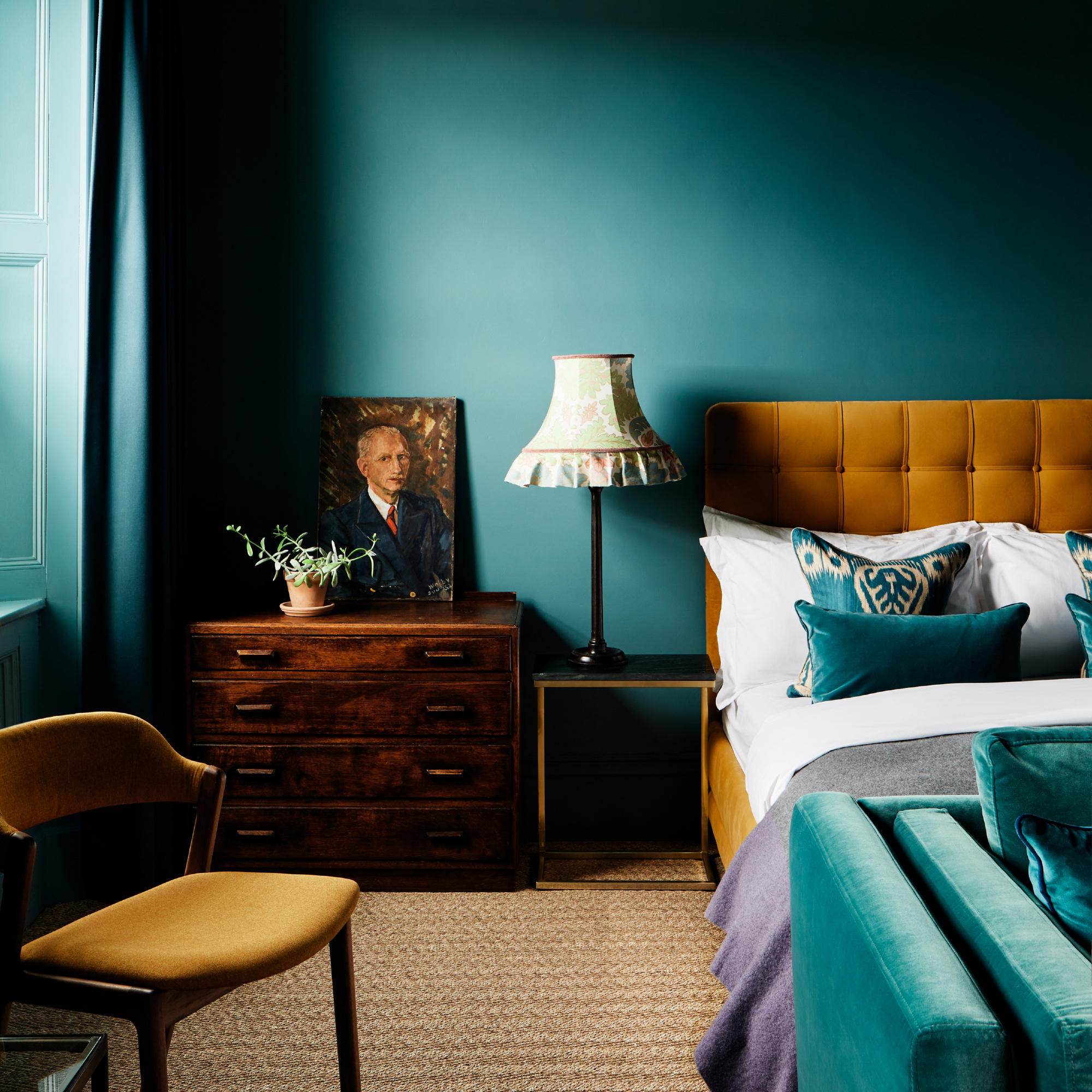
As Patrick says above there are two options on how to decorate a north-facing room and if paler colours aren't for you then opt for a more dramatic look.
'You can embrace the natural darkness of a north-facing room by choosing a rich shade such as Burlington Arcade™ No.216. Enveloping the room in a deeper colour scheme and surrendering to the reduced lighting of a north-facing room can evoke a feeling of comfort and intimacy,' advises Dominic Myland, CEO of Mylands.
You still need to choose colours that are 'warm' though, and team them with other cosy aspects like sumptuous velvet cushions, jute carpet and throws that feel tactile and luxurious.

Creating outstanding products in over 200 shades and offering its bespoke colour-matching service, Mylands has, over six generations, crafted its wares with quality, versatility and depth at its heart. In 1984 Dominic joined the business full time, having previously worked there in his school holidays from the age of 14. Working across all areas of the company from the factory to the boardroom, Dominic took over the company from his father in 1998 and continues the family tradition of perfection in paint.
3. Add warmth with flooring
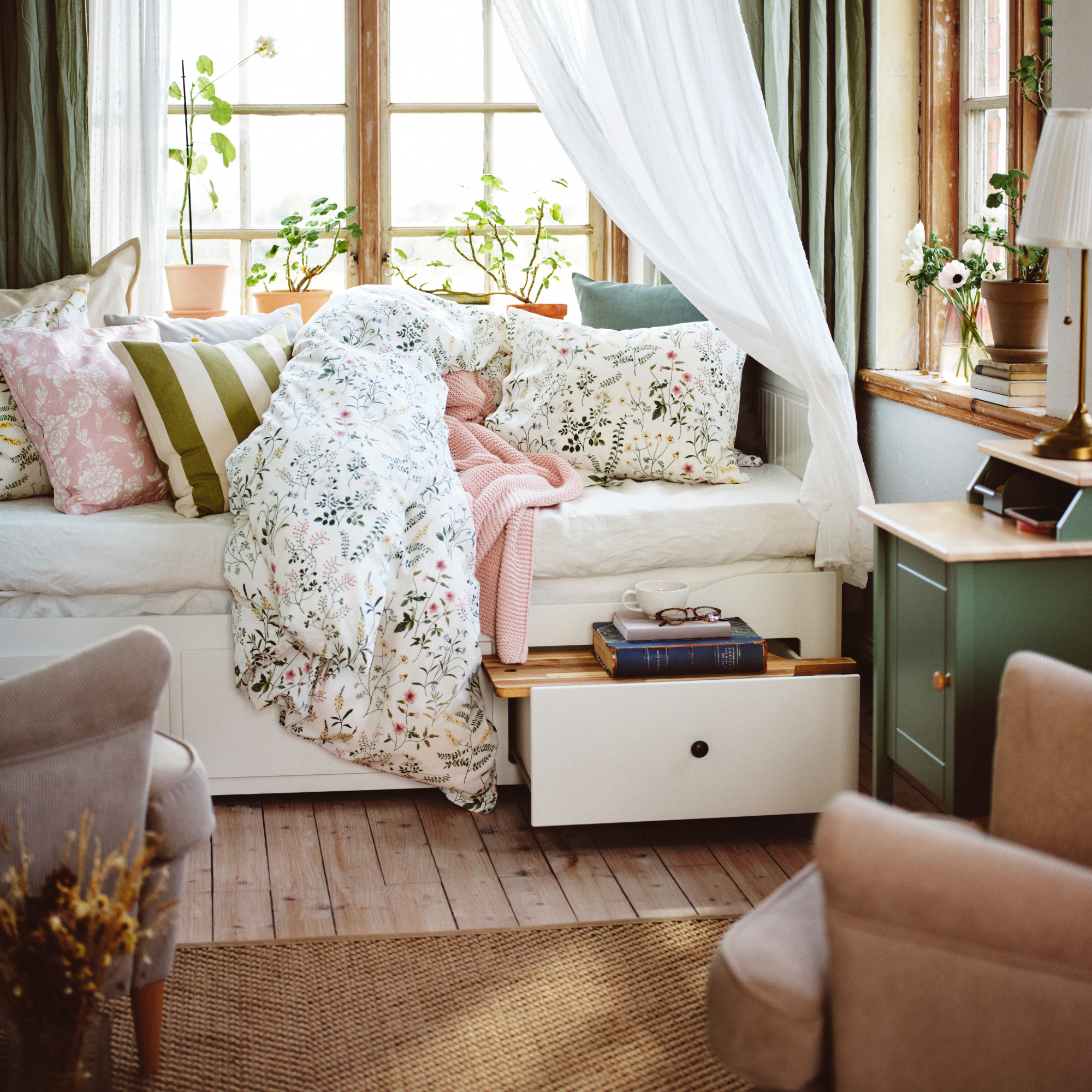
Once you're chosen your colour scheme it's a good time to consider your flooring. The main thing with a north-facing room is to always look at what adds warmth as this is what's lacking light wise. Flooring in colours like oatmeal or coir will do the trick.
'When it comes to rugs, a good rule of thumb is lighter colours reflect light, so white, cream, and pale colours do well in opening up darker looking spaces,' say the team at IKEA. 'Try neutral-coloured rugs in jute or rattan. These natural materials will have a similar brightening effect to a cream rug whilst also being more hard-wearing and easier to keep clean.'
Whether you have carpet or beautiful bare boards, adding a rug, or even laying a couple will lighten up your space.
4. Opt for paler furniture

If you've chosen the lighter colour route on your walls then you'll need to add balance with warmer tones in other areas. Furniture in taupe, mushroom or stone will do the trick and pick slubby linen cushions in contrasting tones to further accentuate the look. Dani Burroughs, head of product for Snug explains:
'North-facing rooms typically have less natural light, so they can sometimes feel darker and slightly colder. For those working with pale walls, we would suggest selecting furniture and accessories with warmer undertones. Think, a jute rug, chenille sofa, soft throw and gold accents – these tactile touches will create texture and help to warm up the space.'
Choosing neutral furniture will also give you more flexibility if you want to change your wall colour at a later date.
5. Match furniture to walls
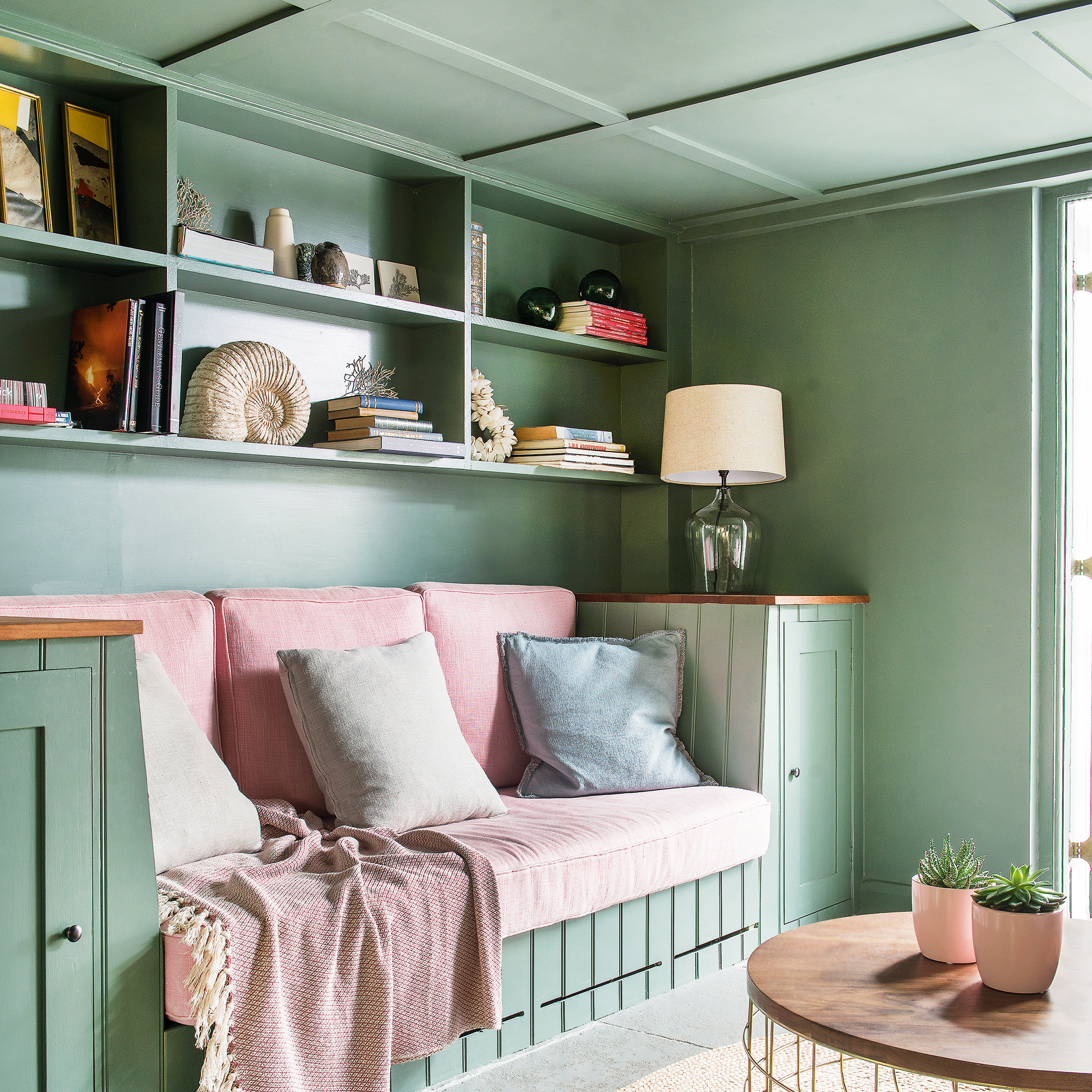
For a truly all-encompassing feel consider painting your furniture the same colour as your walls. It will make them blend in more and therefore less likely to jar the eye.
'In a north-facing room, where natural light is often limited, it's advisable to use colours that enhance brightness and create a cosy atmosphere,' advises Francesca Wezel, founder, Francesca's Paints.
'Remember, every room is unique, and personal preferences play a significant role in decorating. Find a balance that suits your style while maximising the natural and artificial light available in your north-facing room.'
Team with warming sand and wooden accessories for a cosy contrast.
6. Consider colour drenching
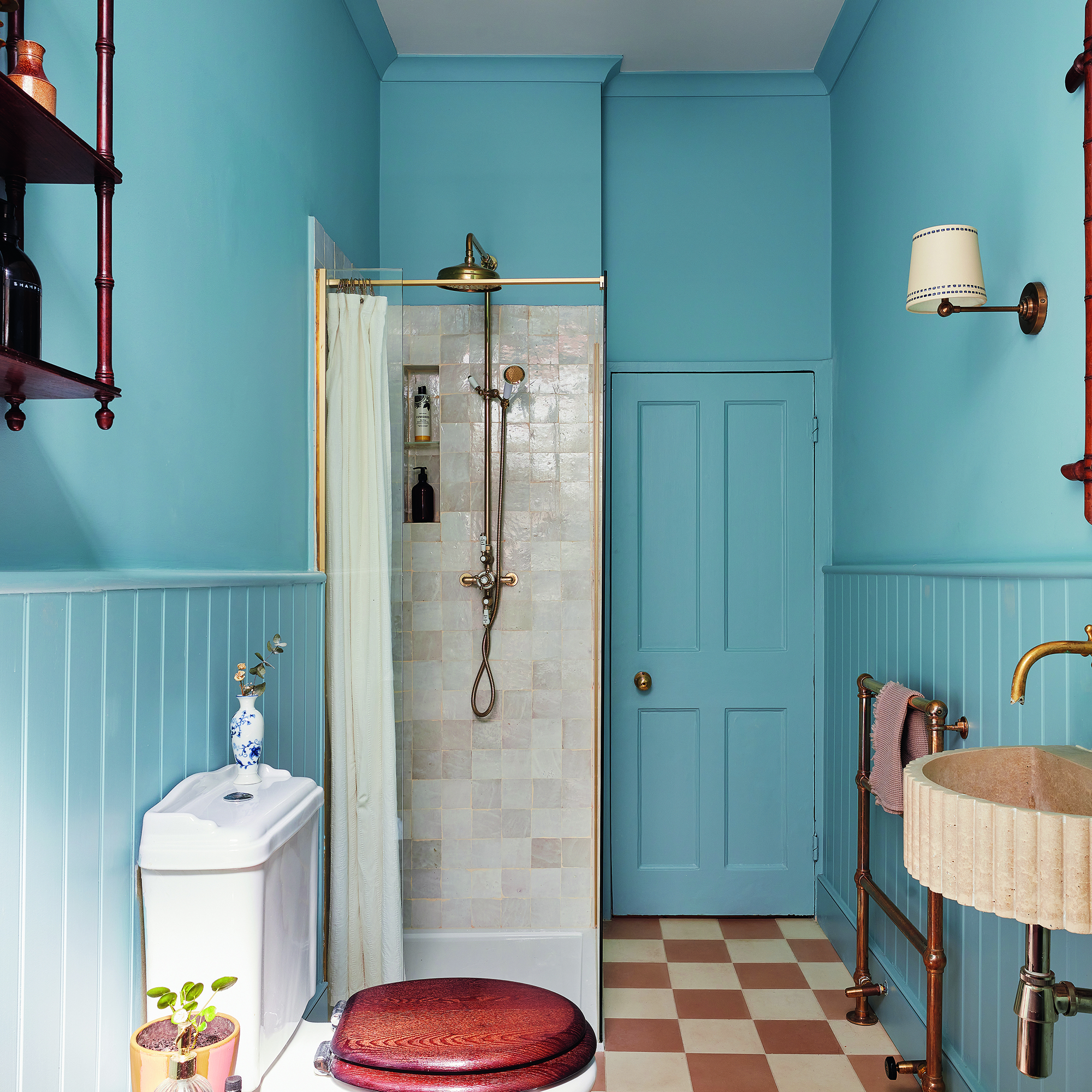
It's not just living rooms, kitchens and bedrooms that can suffer from the north-facing room issue, bathroom ideas can too.
'North facing rooms can often feel colder so always consider the purpose and size of the room before choosing a paint colour,' says Helen Shaw, director of marketing, Benjamin Moore.
'Small-sized bathrooms with limited natural light lend themselves to a strong colour palette that can create a cocooning sensation,' adds Helen. This is a great point, and it means you can choose that dark and dramatic shade you've always wanted to try as a smaller space can take – and the other bonus being is that it works brilliantly in a north-facing bathroom, and if once decorated you don't like it – you won't have wasted a fortune on paint.

Helen Shaw is part of Benjamin Moore's UK division. Colour expert and international marketing director, Helen and her husband Craig are founders of Shaw Paints, acquired by Benjamin Moore in 2020.
7. Choose your lighting carefully

In a north-facing room, it pays to be clever with all the elements that you choose so as well as working together harmoniously, they also enhance and aid this common interior design problem.
Lighting ideas are one such factor that can really help to warm up the space when the light coming in is 'cool'. Lou Graham, founder of Graham & Green agrees:
'Lighting plays a crucial role in transforming north-facing rooms – consider various levels from ceiling and wall to table and floor lamps to achieve a harmonious balance. The goal is to mimic natural light and offset the potential darkness of a north-facing aspect.'
8. Allow light to flow with voile curtains
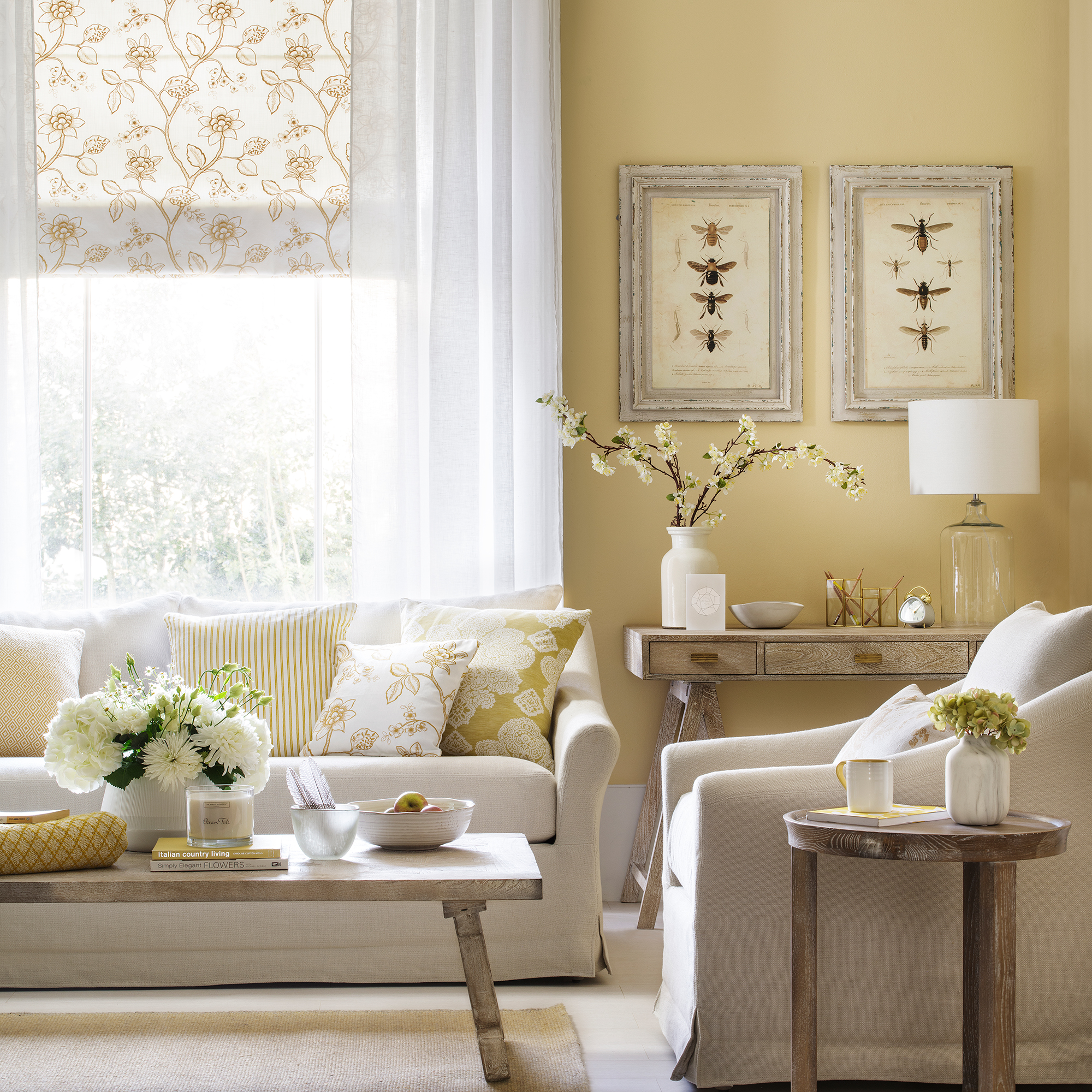
Although it's tempting to add standard curtains to a north-facing room, it's better to chose lightweight fabrics like voiles or shutters. Blocking light will further impact the feel of the room – enhancing what you have is what's important.
'To infuse brightness as well as a feeling of luxury into a north-facing room, consider the elegance of voile curtains paired with dress curtains crafted from neutral fabrics,' advises Debbie Leigh, design manager at ILIV.
'Voiles, with their sheer and lightweight characteristics, delicately filter the incoming natural light, creating a luminous and ethereal atmosphere. Choosing dress curtains in neutral tones, such as soft greys, beige, or ivory, adds a layer of sophistication and warmth without compromising the room's brightness. Opt for fabrics with a subtle sheen or texture to enhance the luxurious feel and promote the play of light in the space.'
Another tip is to hang your curtains as high as possible, this tricks the eye into thinking the wall is larger. Blinds are another option but their application will depend on the type of window.

Debbie is an expert in creating beautifully coordinated fabric collections that can be easily combined to create harmonious interior schemes. With more than 10 years of experience, she takes every design from conception right through to the finished textile - inspired by the latest trends and techniques from every continent.
9. Lighten up with bedding

When it comes to adding decorative aspects consider upholstering your headboard, using patterned cushions and cheerful bedding. It will add interest to the space and you can weave textures into the mix too with a slubby linen duvet and wool-mix blankets.
We spoke to Lucy Ackroyd, head of design at Christy for her top tips. 'When dressing a north-facing bedroom, use as much fabric as possible as this will add to the luxurious and warm feel of the space. This helps to create a warm jewel-like room that you want to come home to and hunker down in.'
It's a great way to add colour if you're not sure what to paint the walls. Lucy adds:
'Use warm colours and fabrics that are both inviting to the eye as well as providing comfort and luxury. It’s worth noting that any colours in a north-facing room will naturally have a green tint, so if you want to lean into this then it’s a great opportunity to inject further pops of colour with accessories and bedding.'

Lucy Ackroyd is head of design at Christy. Having been with the company 17 years and with a background prior to that in textile design, Lucy brings a breadth of knowledge and insight on fabric and colours in relation to home interiors. With her expertise, a usual day sees Lucy delving into anything from creative planning, working on strategy and even supporting with day-to-day admin.
10. Work magic with mirrors
A great idea to complete a north-facing room is to use mirror ideas – they will help to bounce the light around as it comes in. Place them adjacent to the light source to be most effective. Cushions and throws are always ideal for adding colour, choose designs that have bold patterns and textures – consider luxury fabrics and those with trims and ruffles.
Gallery wall ideas will also be a good addition as they add colour and print whilst the glass reflects the light, so go big with a display on one wall.
FAQs
What colours look good in a north-facing room?
The tendency is to reach for white, and although we love white and its light and airy feel, it's not necessarily the right choice for a north-facing room unless it's a creamy 'warm' white.
'North-facing windows bring a cooler light to a room, so when painting the walls, ensure to choose warmer colours that are going to make the room feel homely and cosy,' says Lucy. 'Instead of cool colours like greys, blues and whites, opt for more neutral colours with a warm base tone such as off-whites, beiges and nudes. For a more dramatic effect, choose greens, burgundies, and browns although it’s worth noting that using too much flat, dark colour on the walls may make the room feel dark at certain times of the day.'
How to brighten a north-facing room?
'North-facing rooms tend to get very little natural light, so when choosing colour, you can either showcase or balance out the cooler space,' say the team at IKEA. 'If you are looking to introduce warmth and brightness – off-white and neutral paint colours with a subtle yellow or red undertone are great options. Whereas, if you’re seeking to embrace the cooler look, shades like duck egg blue and warmer grey tones will do the trick.'
Aside from paint, the next way to brighten up is by being clever with your lighting. Lucy explains: 'As expected, lighting is a huge consideration in a north-facing room. It’s important to think about light at every level; ceiling, wall and lamp height as this will make the room feel more balanced. Avoid harsh, white overhead lighting and instead opt for dimmer and softer bulb lighting that can be strategically placed in corners and levels of the room.'
Stop neglecting that north-facing room, with these tips you can unlock it's huge potential.

Sophie has been an interior stylist and journalist for over 25 years and has worked for many of the main interior magazines during that time, both in-house and as a freelancer. On the side, as well as being the News Editor for indie magazine, 91, she trained to be a florist in 2019 and launched Flowers Inside My Head, a bespoke floral design studio where she curates beautiful flowers for modern weddings and events.